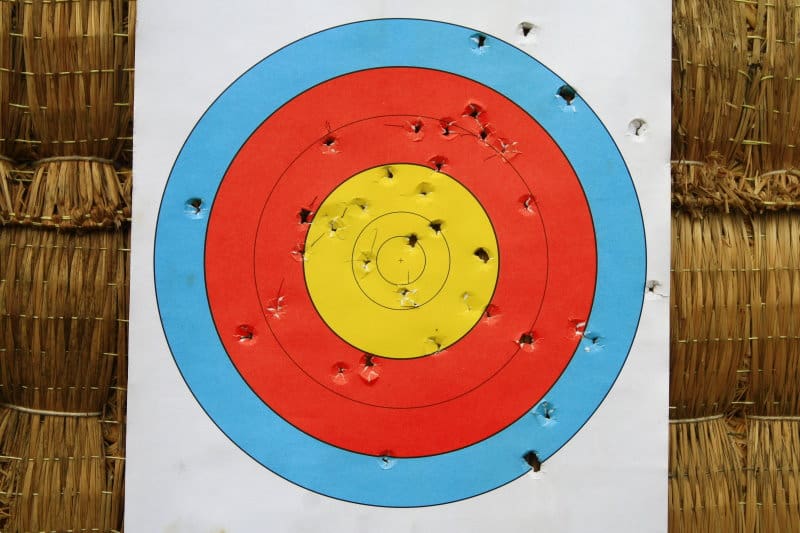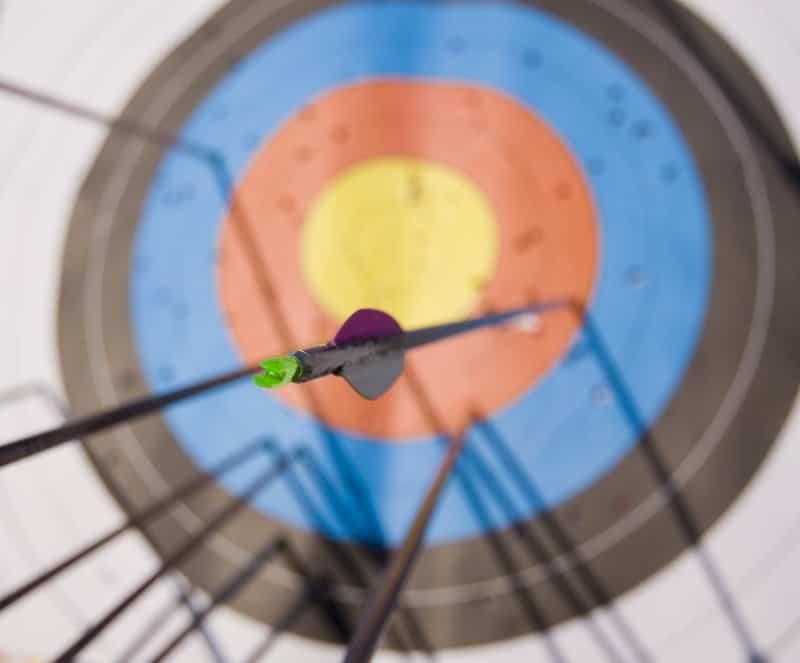Any archer, whether professional or amateur, understands the need to know the mechanics behind the bow they use. Archers are also aware of the rule that proper tuning helps you master your accuracy.
There are many reasons as to why nock tuning is necessary. Its importance is because the process grants the shooter better control of the bow. Adjusting the arrow’s nock also helps improve the archer’s aim and accuracy.
That said, it’s important that you know what needs to be done when it comes to your arrow’s nock. In other words, we’re going to show you how to correctly tune nocks and tell you how necessary it is.
Is Nock Tuning Necessary?
Adjusting your bow’s nock is an important part of having a proper archery rig. You also need to tune it well, so that your shooting and aim can get better with practice.
A nock works in a way that helps the archer find the right spot for them to shoot their arrows in a perfectly straight line. A tuned nock also ensures that each of your arrows has one side that’s stiffer than the other.
Interestingly, an arrow’s stiff side is the weaker edge of its shaft. Nock tuning makes all your arrows share the same stiff side. This way they’ll have consistent accuracy rates, help your arrows flow straight, and form perfect bullet holes.
How to Nock Tune Your Arrows
The nock tuning process doesn’t require much experience to be carried out perfectly. All it takes is the basic understanding of your bow’s structure and 15 minutes of your time for each of your arrows.
But before that, you need to have the following gear on hand first:
- A perfectly toned archery bow
- Toned arrows—or just one arrow would suffice
- Attach broadheads and check that they’re synced with your field points
Now that you’re prepared, here are the steps you’ll have to follow for a proper nock tuning process:
- Use an arrow spinner to check that the arrow’s shaft is straight
- Hold your arrow between your dominant hand’s thumb and index finger
- Use your other hand to check that your arrow is parallel to the ground and is positioned waist-high
- Pull the string towards your body
- Rest the shaft onto the arrow’s rest and snug it in the nock
- Make sure that the arrow’s feather faces upward
- Draw the string back until it hits the slot
From this step on, you’ll continue to adjust the arrow’s direction until your nocking point is perfect. For a four-fletch arrow, you’ll be rotating at 90 degrees, and for a three-fletch one, you’d rotate at 120 degrees.
In addition, make sure that you keep turning in your dominant hand’s direction. Another general rule is to turn the arrow either clockwise or counter-clockwise until one of your cock vanes faces you.
How to Check if Your Nock Is Toned

To make sure that your nock’s fit is proper, there’s a simple test you can do to ensure this. Just prepare your paper because you’ll need to shoot bare arrows through it. For extra measure, you can also get an N-tune arrow wrap to guide you through the process.
- Use the arrow wrap as a reference to know where the nock begins and ends. This will help you tone your nock better
- Pick a shooting range between 5 to 10ft
- Set your starting point where your arrow rest is 13/16th
- Shoot your first arrow bare or from the first adjustment point
- Note the shape that the arrowhead makes in the paper
- If it’s not a perfect bullet hole, position the shaft to the next point
- As a bonus, number each dent made to its corresponding point on the arrow wrap. This way you’ll keep track of your progress
- Repeat this process and remember to turn the shaft in the same direction every time
- Once you get the perfect bullet hole, adjust the rest of your arrows to the same nocking point
Where Is the Nock Located?
On your rig, the nock is the point that connects your arrow and bowstring. It typically looks like a small brass band that’s coiled onto the bow. However, while most bows come with pre-installed nock points, some don’t. You can purchase a clap-on nock if your bow lacks one.
Another interesting fact about nocks is that they consist of two parts, the groove, and the throat. The groove is the closest part to the arrow’s rest, while the throat is the thickest one. To be exact, the throat typically measures around an inch.
As a result, the nock’s simple design helps secure the arrow in its place. When the nocking point is tuned to perfection this prevents the string from being restricted. This freedom of movement allows the bowstring to spin while the archer draws his bow.
It’s important that the nock’s throat remains seated near the string. The arrow will be confined if the fit of the throat is too tight. That’ll make your aim inaccurate and slower your arrow’s flight.
Issues Poor Nock Tuning Can Cause

Many things can go south if you don’t take the time to tune your nock. One of the main issues is that your throw and arrow flow will be totally off. When your nocking point isn’t tuned well, your arrows will fly more to the left or the right, making your aim inaccurate.
Another issue that may arise is the string’s tight hold on your arrow. When the nock is tuned too tight the shaft isn’t allowed to breathe or flow freely. On the other hand, if it’s too loose, you’ll find it difficult to keep the arrow in place, and in turn, shoot properly.
How Important Is Arrow Tuning?
Just as important as nock tuning, arrow tuning is also a necessity. This process helps you gain more control of your bow and not wear your arrows too fast. Plus, a tuned arrow with a broadhead that’s finely adjusted to it will help it fly straighter and faster.
Choosing the right tuning method for your arrow differs from one bow to another. Many archers opt for the bare shaft tuning method since it helps them observe their arrow’s performance and adjust their nocks accordingly.
Final Thoughts
Is nock tuning necessary? Absolutely, because no archer can master accurate aim without proper tuning of their nocking points. Plus, the process itself is pretty straightforward and requires little experience to be carried out well.
Not just that but, nock tuning can help you avoid many shooting problems while out in the field. Tuning your arrow as well will save you a lot of trouble. In fact, you should also make sure that your bowstring is fully functional so check out these signs.

